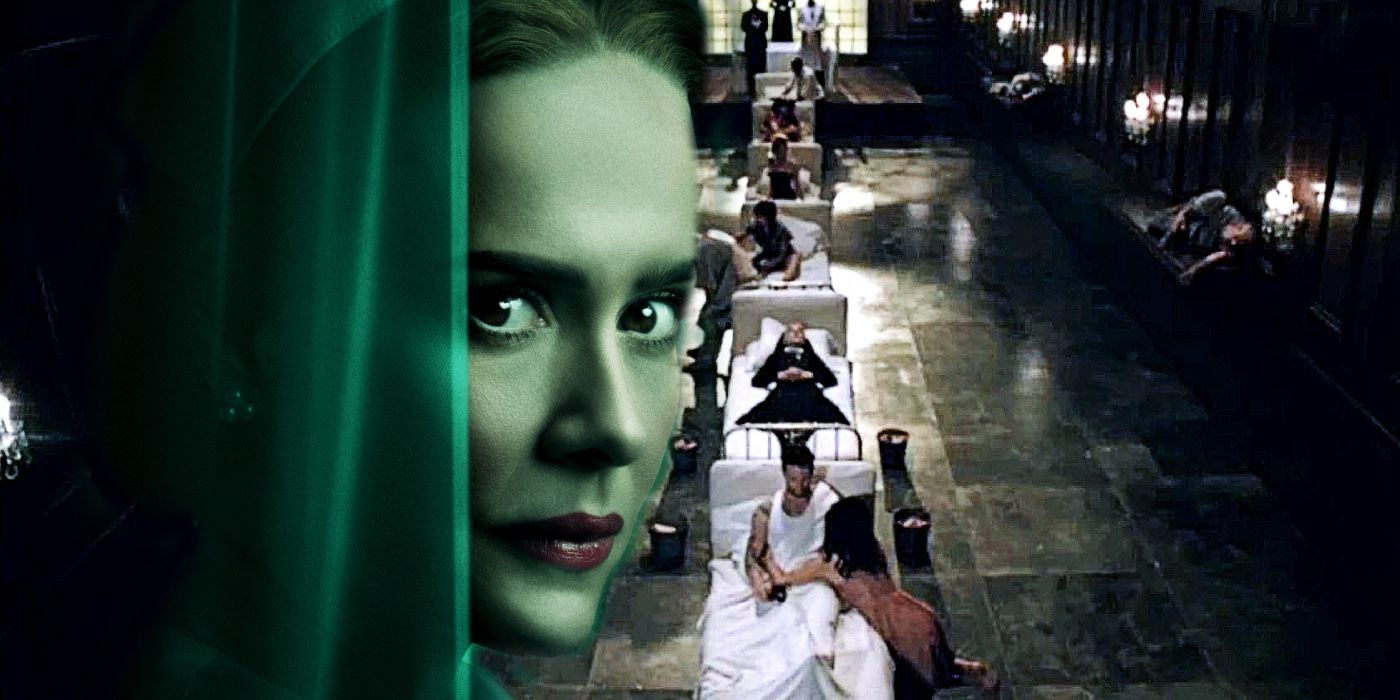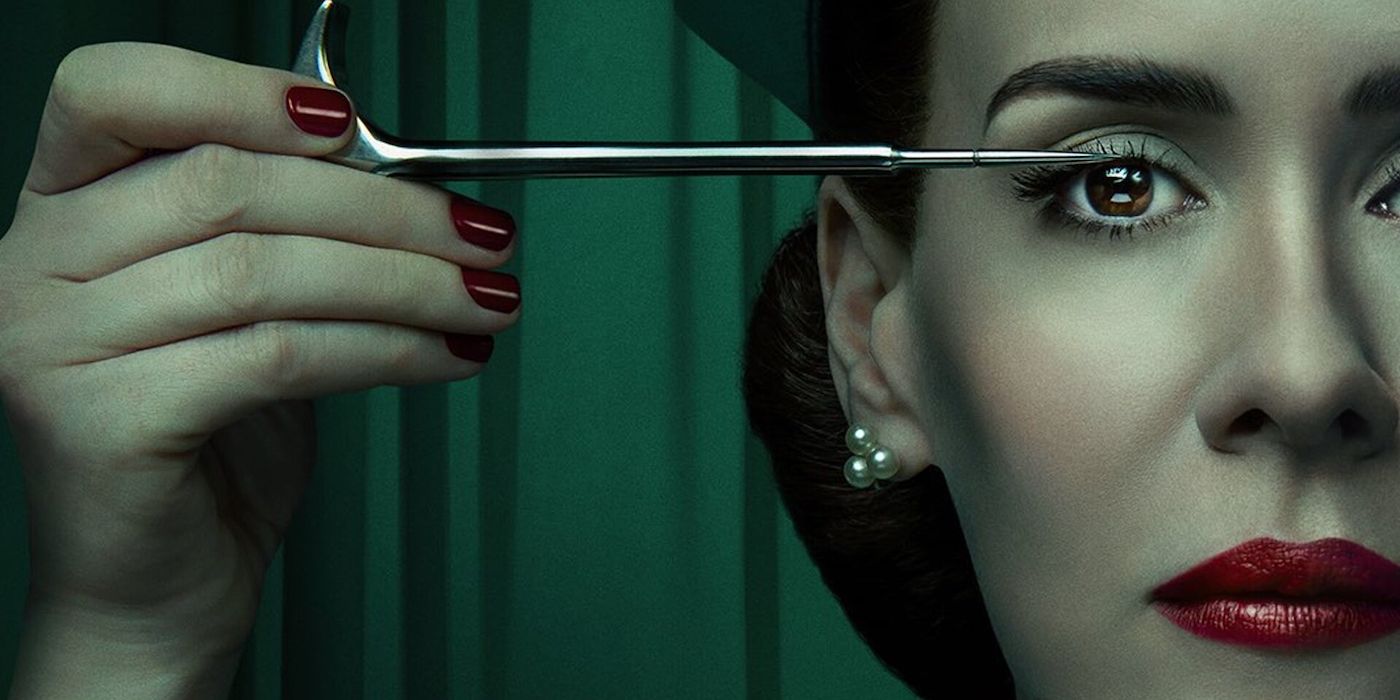American Horror Story has become a series that’s synonymous with Ryan Murphy’s fearless sensibilities as a showrunner, but his latest TV show, Ratched, is the perfect successor to his horror anthology's best—season 2, Asylum.
The works of Ryan Murphy are never afraid to embrace the surreal and go for broke, both in terms of their storytelling and how much they manage to cram into a single season of television. American Horror Story is Murphy’s show that’s most emblematic of this, and with season 10 slated for a 2021 release and a spin-off, American Horror Stories, on the way, it looks like the eccentric anthology series isn’t going anywhere for a while.
Murphy has covered incredibly diverse material with each season of American Horror Story, and he’s even gotten to the point where certain seasons have been direct continuations and crossovers with previous installments. Asylum, season 2 of American Horror Story, is frequently viewed as the show's high point. However, it contains characters and ideas that Murphy has yet to return to, or has only been done in an extremely limited capacity, perhaps even out of the fear of tarnishing Asylum’s reputation in the process. Murphy’s latest, Ratched on Netflix, cleverly addresses this by making it the perfect sequel to AHS: Asylum, even though it tells an original, standalone story that's not connected to his other show in any way.
All of Ryan Murphy’s productions for Netflix have skewed more towards the genre of prestige dramas, and the fact that Ratched acts as a prequel to Milos Forman’s Academy Award winning movie, One Flew Over the Cuckoo’s Nest, is the biggest example of this. Ratched is advertised as a drama, but it’s actually a psychological horror series, not just in terms of its subject matter, but also in how it’s presented to the audience. Ratched features grim lighting, foreboding camera movements, and an unflinching look at pain to highlight the show's horror inspirations. During intense moments of stress, the characters get drenched in dramatic washes of green and red light, as if they’re temporarily stuck in a Dario Argento movie.
Ratched takes on many of the same themes and ideas that Murphy plays around with in Asylum and features a comparable setting in such a way that it’s impossible not to draw comparisons between the two. However, Ratched is able to do more with Asylum’s subject matter because it has the freedom of not being a season of American Horror Story. Ratched is stylized, but fixates on realism via disturbing forms of treatment like lobotomies and hydrotherapy. Ratched’s villains are two-dimensional characters who want to do the right thing, whereas the aggressors in Asylum are exaggerated antagonists. This evolution of Asylum’s themes allows for the same material to be experienced in a staggering and uncomfortable new light. Ratched doesn’t split its focus nearly as much as Asylum does, and it’s stronger for how it houses all of its horrors under the larger umbrella of rehabilitation. Asylum, on the other hand, creates scares from outlandish ideas like aliens, Angels of Death, and Nazi doctors; Ratched pulls from the realistic horrors of abuse.
For a series about mental health and rehabilitation, there’s a shocking amount of murders that fill the season with a body count that doesn’t just rival other seasons of American Horror Story, but exceeds what’s shown in AHS: Asylum. Ratched contains elements familiar to American Horror Story such as serial killers, secret relationships, and a disturbing amount of body horror. Ratched establishes a dangerous mix of science and hubris that feels like what AHS: Asylum was on the precipice of achieving, but was always too distracted to fully consider. As such, Ryan Murphy’s Ratched is a stark expansion of American Horror Story, and it’s fair to say that Asylum’s Sister Jude Martin would be a big fan of Nurse Ratched’s work.


